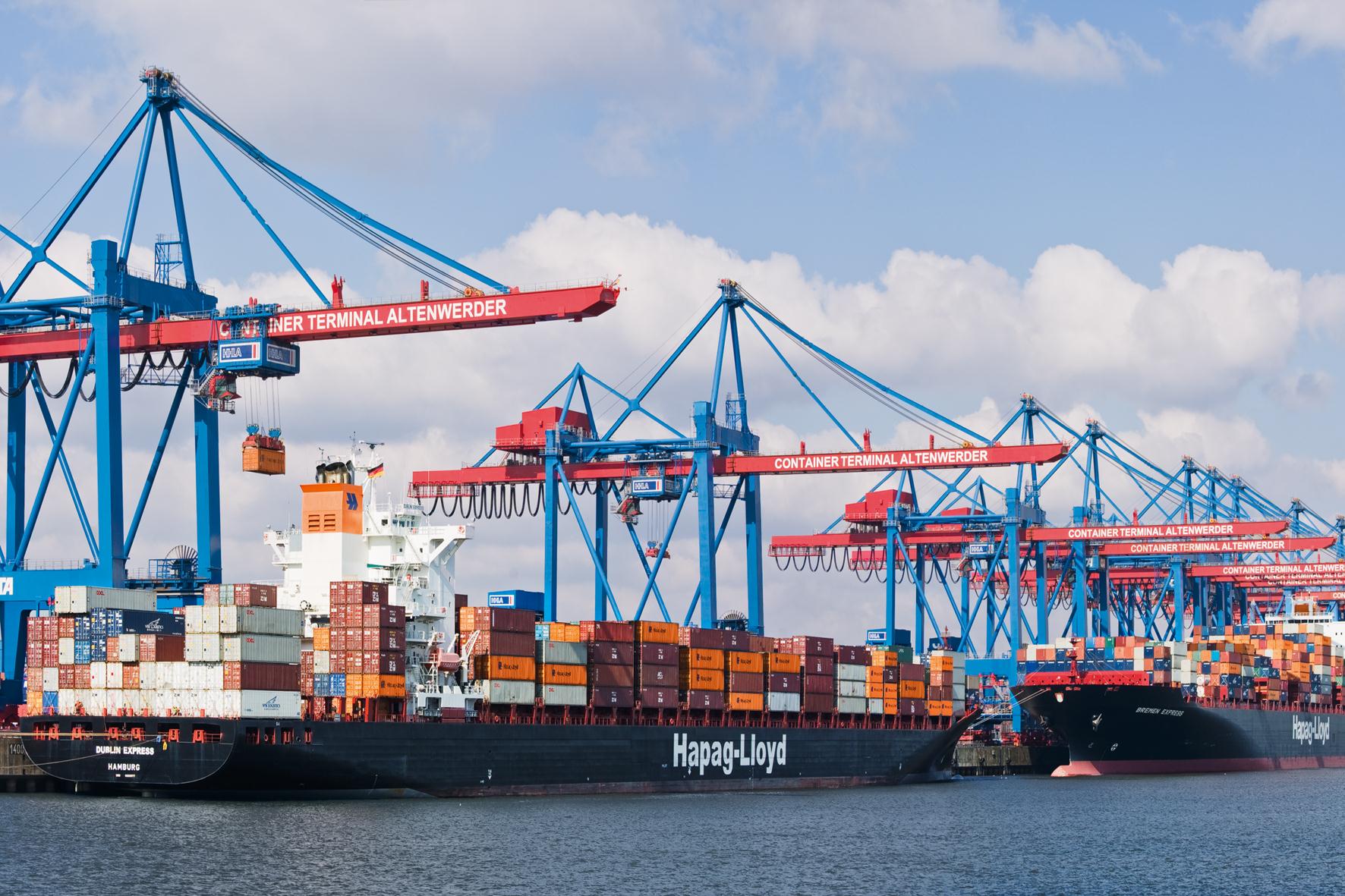The European Commission has approved the merger of German container shipping line Hapag-Lloyd and Kuwait-based United Arab Shipping Co. UASC has agreed to withdraw from the NEU1 consortium, of which it was a member. The commission examined in detail 13 routes connecting Europe to the Americas, the Middle East, India, the Far East, Australasia, West Africa and between Northern Europe and the Mediterranean.
The merged carrier will join The Alliance, which also includes Hanjin Shipping, K Line, MOL, NYK Line and Yang Ming.
The merger is driven by the fierce competition that characterizes the container business. Indeed, the dog-eat-dog competition is accelerating the consolidation process, which could have a strong impact on smaller players.
Before Hapag-Lloyd shareholders approved the merger with UASC on August 26, UASC stakeholders had already given the green light. UASC’s main shareholder is Qatar, which holds 51% of the shares, followed by Saudi Arabia with 35%, with Kuwait and the United Arab Emirates sharing the remaining shares.
The merger creates the world’s fifth-largest container shipping line with a capacity of 1.6 million TEUs, a 7% market share and an annual US$13 billion turnover, and provides access to important Asia-Europe, trans-Atlantic and trans-Pacific trade routes. One Hamburg-based source told Asia Cargo Newsthat there were plans to raise US$400 million capital within six months of the transaction’s completion.

After last year’s merger with the container division of the Chilean shipping line CSAV, the merger with UASC is Hapag-Lloyd’s second one with a competing shipping line within a year. Hapag-Lloyd’s chief executive Rolf Habben Jansen, describing the move as a “milestone,” observed that it was the “next right, necessary step forward.”
The UASC merger takes place at a time when the new generation of mega container ships dominates the world’s sea-trade routes. Consequently, both Hapag-Lloyd and UASC are pinning their hopes of benefiting from what are called “incredible synergy effects,” estimated to be worth some €435 million (US$454.7 million) each year, resulting from a stronger market position in the Far East and Middle East, the optimization of the shipping services and the combined fleet of ships, and savings, including of personnel. This would also result in a quick and sustained growth without any additional short-term investment in the fleet, as a recent Hapag-Lloyd shareholder report contends.
Nevertheless, Hapag-Lloyd faces huge debts of the merger touching some €7 billion (US$7.3 billion), besides the running business losses. “You cannot get a fast-track runner out of two limping partners,” said an analyst.
Pundits say that both companies will face high losses in their day-to-day business. Bank analysts and rating agencies say that in the case of Hapag-Lloyd, this may be its last opportunity to make it to the “big league” of the shipping world. Nevertheless, doubts have also been expressed whether it has found the right partner. As far as turnover is concerned, UASC is merely a third the size of Hapag-Lloyd.
Hapag-Lloyd is paying the Arab investors with shares in the new mega company.
UASC’s patrons made huge investments in the modernization of the fleet: the line has ordered or already received from Asian shipyards a total of 17 large ships with space for 15,000 to about 19,000 containers.
With the advent of the mega ships, things have become tougher for smaller ships. Vessels Value, a shipping agency, has been saying that the mega ships have been pushing the smaller container vessels out of the market. Instead of the average life span of 22 years, the smaller ships are now being scrapped after 14 years.
Shipping experts at the rating agency Moody’s evaluate the merger’s viability by pointing out that the projected growth in global trade was 2.6% this year, up from only 1.6% growth last year, whereas the global shipping industry had expanded its fleet in recent years to the record level of some 20 million TEUs of transport capacity.
The expansion phase does not end there. During the next three years, a further 2.5 million TEUs will be added. In short, there will be an overcapacity of ships and containers with weak growth in demand. Moody’s suggests that container shipping will be squeezed between a weak growth in world trade and huge overcapacities through the container fleet expansion.
This has also produced huge pressure on freight rates. Hapag-Lloyd suffered a decline in freight rates – the prices of each shipped container – of over 19% during the second quarter of 2016. Indeed, consultancies such as Drewry expect a loss of up to US$5 million in the current year in the shipping industry.
Hapag-Lloyd may draw consolation from the fact that it will not be alone in sharing this fate. Maersk reported for its second quarter of 2016 a two-thirds decline in profits; indeed, even the increased volume of container transport by 7% could not offset the price decline.
Post-merger, the distribution of shares at Hapag-Lloyd will change: Qatar and Saudi Arabia will hold 14% and 10% of the shares, respectively; Chile’s CSAV about 23% of shares and the logistics company Klaus-Michael Kuehne some 15%. The City of Hamburg, through its investment arm, presently has a 15% stake, but since it does not intend to participate in the increased capital, its shares – and, consequently, its influence over Hapag-Lloyd – will proportionately decline when some of the shareholders, as planned, raise capital of US$400 million.
By Manik Mehta
International Correspondent | Hamburg



